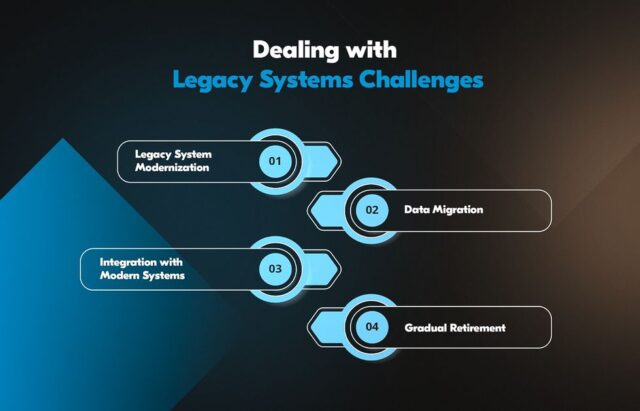Trapped in the Past: The Enduring Use of Obsolete Windows Software
As technology rapidly advances, many individuals find themselves constrained by outdated software and devices that have long crossed their primes. Observing the peculiar reality of obsolete Windows machines reveals a stark contrast between the shiny new technologies we often take for granted and the old ones still operational around us.
This year marks a significant milestone: the 50th anniversary of Microsoft. While the company’s cultural influence may have shifted over time, Microsoft has regained its position at the forefront of the tech industry. Investing heavily in artificial intelligence and other advanced technologies, Microsoft continues to reshape the digital landscape. However, amidst this transformation, its earlier products persist, demonstrating the company’s deep-rooted influence on modern society.
Unearthing Forgotten Technology
On a recent visit to a medical facility in New York City, a curious sight caught my attention: an elevator operating on Windows XP, a system that debuted nearly 25 years ago. This epitomizes an ever-growing reliance on legacy systems that many prefer to overlook.
“In a way, Windows represents the ultimate infrastructure,” says Lee Vinsel, an associate professor who studies legacy technology at Virginia Tech. “Bill Gates’ fortune stems from how entrenched Windows is in our daily operations.” Even with a shift towards modern solutions, many industries continue to depend on older Windows versions, embodying Microsoft’s lasting legacy.
Even if you prefer other brands, interactions with Windows machines are an everyday reality. For instance, many ATMs are still powered by outdated Windows operating systems, including Windows XP. Elvis Montiero, an ATM field technician, explains, “Upgrading these machines is challenging due to hardware compatibility and regulatory requirements.” Despite ceasing official support for Windows XP in 2014, its reliability remains a factor in its continued use.
The Continuing Legacy of Outdated Software
Surprisingly, the reliance on old Microsoft products is not just limited to ATMs. In 2024, a job listing for a systems administrator at Deutsche Bahn, Germany’s railway service, drew attention due to its requirement for expertise in Windows 3.11 and MS-DOS, systems that are over three decades old. This situation highlights how age-old operating systems continue to dictate transportation services in certain regions.
A spokesperson for Deutsche Bahn notes, “Our trains have lengthy service lives and remain operational for 30 years or more.” As long as these systems demonstrate stability and safety, they remain in service.
Moreover, the fate of some trains in San Francisco’s Muni Metro is similarly tied to dated technology, requiring a floppy disk to boot the software on their Automatic Train Control System. Although the municipal transit authority plans to phase this technology out, for now, the floppy disks remain a critical component of daily operations.
The Struggles of Sticking with the Old
A sense of nostalgia often clings to individuals reliant on these historic systems. Take John Watts, who manages high-end printing equipment, including gigantic LightJet printers that still depend on Windows 2000. “Upgrading could cost as much as $60,000 in software licenses, leaving us no choice but to use these outdated machines,” he shares. Scott Carlson, a woodworker in Los Angeles, echoes these sentiments, stating that his essential machine, also running on Windows XP, has proven to be reliable but is plagued by increasingly frequent errors.
The Consequences of Maintaining Old Systems
Working with obsolete technology often leads to tedious experiences. Psychiatrist Eric Zabriskie recalls his time at the US Department of Veterans Affairs, where sluggish computer boot-up times were commonplace. “I would arrive early just to log in—sometimes it took 15 minutes. The whole experience was frustrating,” he reveals.
Many organizations are caught in a cycle of “deferred maintenance,” focusing resource allocations on new features rather than improvements to existing systems, resulting in an over-reliance on aging technology. The burden is particularly apparent when it affects essential services, such as healthcare, where the software managing health records for the VA has been in use since 1997.
A Glimpse into the Future
While legacy systems remain, certain groups are dedicated to preserving digital art and history. Dene Grigar, director of the Electronic Literature Lab, curates a collection of vintage computers to maintain works that define early digital storytelling. Grigar emphasizes the importance of using the original hardware to fully experience these unique creations.
As Microsoft’s infrastructure persists in various facets of our lives, it serves as a stark reminder of how far technology has come—and how much of it is still grounded in the past.
| Technology | Status | Used in |
|---|---|---|
| Windows XP | Obsolete | ATMs, Medical Facilities |
| Windows NT | Obsolete | Banking Systems |
| MS-DOS | Obsolete | Certain Trains, Printers |
| Windows 2000 | Obsolete | Large Printers |














